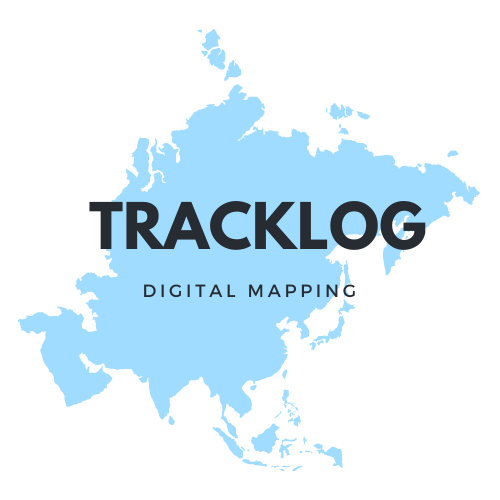You can access books, print journals, and other resources regarding cartography using this research guide. The field of cartography examines the creation, use, and interpretation of maps.
A succinct explanation
Digital mapping, also known as digital cartography, is the act of compiling and formatting a group of data into a virtual image. The main purpose of this technology is to create maps that accurately depict a specific location while highlighting important thoroughfares and other sites of interest. Distances between locations can also be calculated thanks to technology.
Among the library’s holdings
Numerous publications and journals in the library’s collection examine online or digital mapping. The materials are dispersed among the collections with various call numbers. However, G 70. 212 is one phone number range that is a decent location to start when physically browsing. Web mapping, or digital mapping, is the result of a keyword search for “web mapping.”
Constructing your own maps!
You may visualize both past and present census statistics on this site. Indicators of development are also included in Social Explorer, along with information on crime, health, and religion. You must register for an account on Social Explorer in order to use the resource to its full potential. ESRI, the company behind ArcGIS, has a website that enables you to map a constrained number of variables and embed such maps within web pages. Individual addresses should be geocoded and mapped. You can use this website to turn a list of addresses into points on a map. This website will transform the addresses in a spreadsheet you provide into points, which you may subsequently map.
A website resource
This website’s objective is to help professional cartographers with the display of shaded relief and related raster imagery on maps.
Continually reading cartography and GIS journal articles
Want a simple approach to stay current on cartography or GIS journal articles? Do you employ a mobile device as well? Installing the BrowZine software will allow you to build a personalized Bookshelf of your preferred journal titles. When your favorite journals’ Tables of Contents (ToCs) become available, you will then automatically receive them. You can download and read any articles you choose from the publications for which we have subscriptions once you have the Table of Contents. You can get the app from Google Play or the App Store.Not a user or owner of a mobile device? Still available is BrowZine! It now has a web version available. You can access it from here. The web version functions similarly to the mobile app version. Discover the publications you enjoy, build a personalized Bookshelf, obtain the ToCs, and read the articles you desire. Animated maps are up next.
HERE
Four out of five in-car navigation systems use HERE Map Data.
TOMTOM
Leading suppliers of location-based goods and services include TomTom.
Contact us
Want assistance with your digital map problems? Consult an authority.
Reliable, precise, and customized data
American Digital Cartography, Inc. (ADCi), a leader in providing accurate, dependable, and customizable data that represents the changing needs of businesses and organizations across a variety of industries, has more than three decades of experience with digital map data and services. Our staff specializes in modifying map data and securing licensing for GIS, Intranet, Mobile Asset Management, and Internet applications. We are highly responsive and accessible. We provide unmatched service supported by complimentary technical assistance.
Blog ADCi
5 Arguments for Using a Reseller to License Map APIs or Map Data. How Self-Driving Cars Will Affect Transportation Logistics in the Future?
Thrilled Clients
The ADCi team and I collaborated to identify and adapt a data solution for my customer that satisfied all project criteria. Since then, this technology has increased business analytics, decreased ecommerce revenue loss, and enhanced user experience for the client. I believe that ADCi stands out from the competition due to its commitment to providing excellent customer service, availability, and desire to go above and beyond the call of duty to ensure a successful implementation. I would advise anyone searching for a mapping or data solution to use them.
Electronic mapping and digital maps
Digital mapping is the process of compiling and formatting a collection of data into a virtual image on a computer, often known as digital or computer cartography. This technology’s main purpose is to create. Although there are many computer applications that use digital mapping, the Global Positioning System, or GPS satellite network, is where these maps are mostly used in conventional vehicle navigation systems.
History
Traditional paper maps like the Thomas Guide and Geographers’ A-Z Street Atlas are where digital mapping first emerged. Paper maps show basic landscapes that are comparable to digital road maps, but they are frequently heavy, only cover a restricted area, and lack numerous precise details like road obstacles. Furthermore, the only way to “update” a paper map is to buy a new one. However, digital maps can frequently be updated by synchronizing them with updates from business servers.
Increased capacities of the abstract digital cartography
Early digital maps shared the same fundamental capabilities as paper maps, offering a “virtual view” of the roadways as commonly delineated by the topography in the immediate vicinity. Live traffic updates, points of interest, and service locations have been added to digital maps to make them more “user conscious,” however, as GPS technology has advanced over the past ten years.
Data gathering
Digital maps rely extensively on a huge amount of data gathered over time. The majority of the data that makes up digital maps is a combination of street-level data and satellite photography. In order to give consumers the best accurate representation of a location, maps must be updated often. Although there is a vast range of digital mapping companies, the fundamental idea is that these maps will precisely depict roads as they actually are to provide “life-like experiences.”
Usability
For a large portion of the world, images and street-level map data are provided by private and non-commercial computer systems and applications.

Applications in science
Digital mapping has become increasingly popular in the sciences and applied sciences in recent years (since roughly 2000), thanks to the advent of mobile computing (PDAs, tablet PCs, laptops, etc.). As of 2009, engineering, architecture, land surveying, mining, forestry, environmental, and archaeology are among the science disciplines that use digital mapping technology. For more information, see Digital geologic mapping.
Navigational aids using GPS
Digital mapping’s integration with GPS technology has been the main application for growth during the past ten years. Digital mapping navigation systems are based on GPS.
How it functions
The locations of origin and destination required by the digital mapping programming are provided by the coordinates and position as well as the atomic time collected by a terrestrial GPS receiver from GPS satellites orbiting Earth. The easiest and most effective route to reach a location is then shown on a map after this data has been analyzed and collected. GPS receivers gather information from at least four GPS satellites orbiting the Earth to determine three-dimensional position. The GPS receiver then uses position to obtain precise GPS coordinates, or points of latitude and longitude, from GPS satellites. The coordinates, or points, produce an accurate range that is “10–20 meters” away from the real place. The user then inputs the final place (address or coordinates) and the starting point (GPS coordinates) into the digital mapping software. The route is visually represented in real-time by the mapping program. The map then follows the driver’s route. The navigation system will use the current coordinates to recalculate a path to the destination place if the driver deviates from the intended route.
There are numerous stops throughout the consumer journey!
A map is necessary for every voyage.
These things are all called “digital” as they support our happiness and well-being online. Its primary function is to help people; it gathers geospatial data with the help of people and for people.

